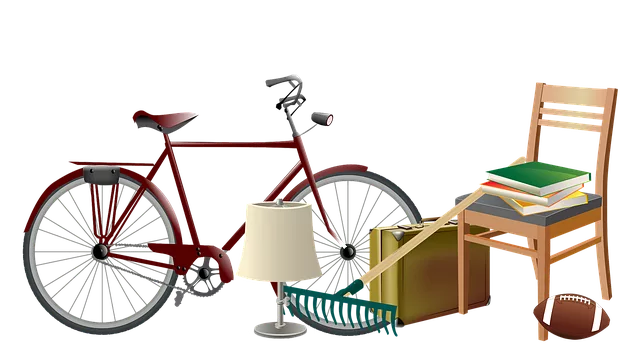Regular tree trimming is essential for maintaining a healthy and safe yard by promoting tree health, structural integrity, and fruit production in fruit-bearing varieties. It also helps prevent overcrowding and competition for nutrients and light. Following trimming, effective yard waste removal and recycling are key practices that keep yards tidy while supporting environmental stewardship. These initiatives transform organic waste into compost or mulch through community programs, reducing landfill contributions and fostering sustainable gardening practices. This cycle enriches the soil and minimizes synthetic fertilizer use, contributing to a thriving yard ecosystem and aligning with broader sustainability goals. Yard Waste Removal and Recycling involve categorizing waste, with larger branches chipped on-site and smaller materials collected for processing. Adhering to local regulations is crucial, as these vary by region and facility. By participating in these programs, individuals can maintain their properties, enhance tree health, and contribute positively to the environment. It's important to utilize available disposal methods like designated drop-off sites and curbside pick-up services, ensuring that yard waste is managed responsibly and sustainably. Yard Waste Removal and Recycling are pivotal for both aesthetic and ecological reasons, promoting a well-maintained landscape and preserving the broader environment.
Tree trimming is a pivotal aspect of maintaining a healthy and aesthetically pleasing yard. Beyond its immediate aesthetic benefits, this practice promotes tree health, safety, and property upkeep. After branches are lopped and limbs are lowered, the resulting debris necessitates efficient removal and recycling. This article delves into the essentials of tree trimming, explores effective post-trimming debris removal techniques, and examines yard waste recycling options, including local resources for responsible disposal. Homeowners and landscape professionals alike will find valuable insights on Yard Waste Removal and Recycling to ensure their green spaces thrive while respecting the environment.
- Understanding Tree Trimming: Necessities and Benefits for Your Yard
- Effective Debris Removal Techniques Post-Trimming
- Yard Waste Recycling Options and Local Resources
Understanding Tree Trimming: Necessities and Benefits for Your Yard

Regular tree trimming is an essential practice for maintaining a healthy and safe yard. This process, which involves selectively cutting back branches, not only enhances the aesthetics of your landscape but also promotes tree health by allowing light and air to reach all areas of the tree. It’s a proactive measure that prevents overcrowding, removing any limbs that could potentially compete with the tree’s main structure for nutrients and sunlight. This selective pruning encourages new growth and fruit production in fruit-bearing trees, and it can significantly reduce the risk of damage from high winds or heavy snow. After the trimming is complete, yard waste removal becomes a critical next step. Efficient yard waste disposal not only keeps your property tidy but also plays a vital role in environmental stewardship. Many communities offer yard waste recycling programs that convert organic debris into compost or mulch, which can then be used to enrich garden soil and reduce the need for synthetic fertilizers. This process ensures that organic matter is repurposed rather than ending up in landfills, thereby supporting sustainable practices and contributing to the health of your yard’s ecosystem.
Effective Debris Removal Techniques Post-Trimming

Following a comprehensive tree trimming session, the removal of resulting debris is a critical step to maintain a well-kept landscape and ensure safety and health of your trees. Effective yard waste removal is not just about clearing space; it’s also an opportunity for environmental stewardship. Municipalities and homeowners alike are increasingly turning to recycling programs for yard waste, which typically include tree trimmings, leaves, and grass clippings. These programs transform organic matter into nutrient-rich compost or mulch, which can then be used to enrich soil and promote plant growth. The process of removing debris after trimming begins with a thorough assessment of the waste generated. Large branches are usually chipped on-site using chippers, reducing their volume and making them easier to handle and transport for recycling. Smaller twigs and leaves can be collected in yard waste bags or containers designed for this purpose. It’s important to follow local regulations regarding yard waste disposal, which may vary depending on the region and available facilities. By utilizing these recycling methods, not only do you clear your property of unwanted debris, but you also contribute to a sustainable practice that benefits both the environment and your trees’ long-term health.
Yard Waste Recycling Options and Local Resources

Maintaining a well-trimmed landscape not only enhances the aesthetics of your property but also contributes to the health and safety of your trees and surrounding environment. Yard waste removal and recycling play a crucial role in this process. Homeowners and landscapers generate large volumes of yard waste, including branches, leaves, grass clippings, and wood chips, during routine maintenance activities. Effective disposal of this waste is essential to prevent it from contributing to landfills and to ensure that organic materials return nutrients to the soil rather than deplete it.
Local municipalities and waste management companies offer various recycling options for yard waste. These programs are designed to compost organic matter, which can then be used as mulch or soil amendments, thereby promoting sustainable land use practices. Many regions have designated collection sites where residents can drop off their yard waste. Additionally, some areas provide curbside pick-up services specifically for yard waste and organics. These services often accept a wide range of materials, including woody debris, leaves, and grass clippings. It is advisable to check with local waste management authorities for specific guidelines and available resources. They can provide information on the most effective ways to recycle yard waste in your community, ensuring that you are contributing positively to environmental sustainability while adhering to local regulations.
Homeowners can maintain a healthy and safe outdoor space by committing to regular tree trimming, which not only enhances tree health but also improves overall yard aesthetics. Following the detailed guidance provided on effective debris removal techniques post-trimming, residents can manage the resulting yard waste efficiently. Moreover, exploring yard waste recycling options and local resources as outlined in this article, ensures that environmental stewardship is upheld while facilitating compliance with community guidelines. By integrating these practices into routine maintenance, communities can thrive with greenery while responsibly managing yard waste removal and recycling.


